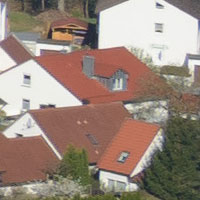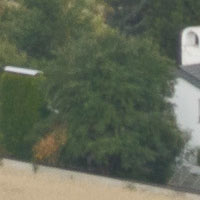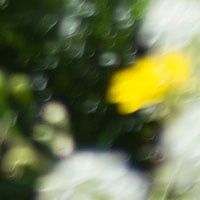Nikon vs Tamron 24-70mm f2.8 review
-
-
Written by Thomas
Quality
Comparison of sharpness / contrast
I’ll show you the real-life performance at 4 mm (center), 13 mm (DX-corner), and 20 mm (FX-corner) on a D800. Processing was done in Lightroom 4.1 from RAW at camera standard settings. Noise-reduction is set to 0, sharpening to 70/0.5/36/10, with no extra tone, color, or saturation-adjustment. White-balance was adjusted to a neutral white and I did some exposure compensation to make the brightness match. CA-removal is ON.
To make the shootout as concise as possible I’ll sum-up all the center-results first. That’s easy because in most cases the three lenses offer excellent performance even wide open. Thus I’ve collected the crops at largest aperture from 24mm up to 70mm in one big table:
Center performance wide open from 24mm to 70mm
:
Nikon 24-70mm f/2.8G with Nikon D800 100% crop from center | Tamron 24-70mm f/2.8 VC with Nikon D800 100% crop from center | Nikon AF-S 24-85mm f/3.5-4.5G VR with Nikon D800 100% crop from center | ||
 |  |  | ||
24mm, f2.8, 100 ISO | 24mm, f2.8, 100 ISO | 24mm, f3.5, 100 ISO | ||
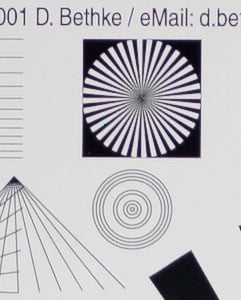 | 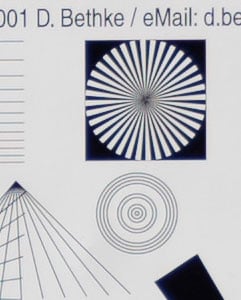 | 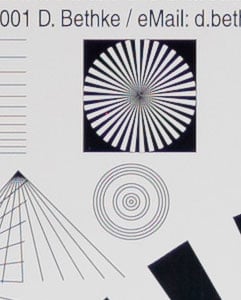 | ||
35mm, f2.8, 100 ISO | 35mm, f2.8, 100 ISO | 35mm, f4.0, 100 ISO | ||
 |  |  | ||
50mm, f2.8, 100 ISO | 50mm, f2.8, 100 ISO | 50mm, f4.2, 100 ISO | ||
 |  |  | ||
70mm, f2.8, 100 ISO | 70mm, f2.8, 100 ISO | 70mm, f4.5, 100 ISO |
As you can see, performance is top-notch. Only the Tamron is showing some weaker contrast at 50mm and 70mm, but that is easily remedied by stopping down to f4.0. And the Nikon 24-70 is just a tad softer at 70mm. The Nikon 24-85 puts in the best performance here, but keep in mind that it is 2/3 to 4/3 of a stop slower than both 24-70mm lenses. Stop the 24-70mm zooms down to f4.0 and there is almost no visible difference in center-performance between all three lenses.
The same holds true for shots at a considerable larger distance like in architecture or landscape shots. If you want the details have a look at the center shots of the “Unremarkables” in the respective single reviews linked at the top of this page.
So center-performance is nothing to worry about with these lenses. But things start to become more challenging once you look a little further away from the optical axis. So let’s go through the performance in the DX-corner next. I’ve included all f-stops from wide-open up to f8 to give you an impression of how much you need to stop down to get the desired performance.
DX-corner performance at 24mm:
Nikon 24-70mm f/2.8G with Nikon D800 100% crop from DX-corner | Tamron 24-70mm f/2.8 VC with Nikon D800 100% crop from DX-corner | Nikon AF-S 24-85mm f/3.5-4.5G VR with Nikon D800 100% crop from DX-corner | ||
 |  |  | ||
24mm, f2.8, 100 ISO | 24mm, f2.8, 100 ISO | 24mm, f3.5, 100 ISO | ||
 |  |  | ||
24mm, f4.0, 100 ISO | 24mm, f4.0, 100 ISO | 24mm, f4.0, 100 ISO | ||
 |  |  | ||
24mm, f5.6, 100 ISO | 24mm, f5.6, 100 ISO | 24mm, f5.6, 100 ISO | ||
 |  | |||
24mm, f8.0, 100 ISO | 24mm, f8.0, 100 ISO | 24mm, f8.0, 100 ISO |
At 24mm the Nikon 24-70 suffers a bit from astigmatism and needs stopping down to f5.6 for very good performance. The Tamron and the Nikon 24-85 are very good already wide open.
DX-corner performance at 35mm:
Nikon 24-70mm f/2.8G with Nikon D800 100% crop from DX-corner | Tamron 24-70mm f/2.8 VC with Nikon D800 100% crop from DX-corner | Nikon AF-S 24-85mm f/3.5-4.5G VR with Nikon D800 100% crop from DX-corner | ||
 |  | n / a | ||
35mm, f2.8, 100 ISO | 35mm, f2.8, 100 ISO | |||
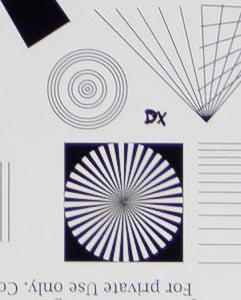 |  |  | ||
35mm, f4.0, 100 ISO | 35mm, f4.0, 100 ISO | 35mm, f4.0, 100 ISO | ||
 |  |  | ||
35mm, f5.6, 100 ISO | 35mm, f5.6, 100 ISO | 35mm, f5.6, 100 ISO | ||
 |  |  | ||
35mm, f8.0, 100 ISO | 35mm, f8.0, 100 ISO | 35mm, f8.0, 100 ISO |
At 35mm it’s the Tamron that is a tad soft wide open and can profit from stopping down.
DX-corner performance at 50mm:
Nikon 24-70mm f/2.8G with Nikon D800 100% crop from DX-corner | Tamron 24-70mm f/2.8 VC with Nikon D800 100% crop from DX-corner | Nikon AF-S 24-85mm f/3.5-4.5G VR with Nikon D800 100% crop from DX-corner | ||
 |  | n / a | ||
50mm, f2.8, 100 ISO | 50mm, f2.8, 100 ISO | |||
 |  |  | ||
50mm, f4.0, 100 ISO | 50mm, f4.0, 100 ISO | 50mm, f4.2, 100 ISO | ||
 |  |  | ||
50mm, f5.6, 100 ISO | 50mm, f5.6, 100 ISO | 50mm, f5.6, 100 ISO | ||
 |  |  | ||
50mm, f8.0, 100 ISO | 50mm, f8.0, 100 ISO | 50mm, f8.0, 100 ISO |
50mm sees both 24-70/2.8 zooms suffering, with the Nikon just a bit soft but the Tamron outright mushy. Only at f8.0 does the DX-corner of the Tamron produce very good results. The Nikon 24-85mm is up there with its 24-70mm sibling, which is quite a feat!
DX-corner performance at 70mm (or 85mm for the Nikon 24-85/3.5-4.5):
I have deliberately chosen to show you the little Nikon at its longest focal length here although this is not an exact apples-to-apples comparison. You can read up in my Nikon 24-85mm review that it is clearly better in the DX-corner at 85mm than at 70mm. So if you own this lens I’d advise you to zoom fully in if your crop doesn’t become too tight
Nikon 24-70mm f/2.8G with Nikon D800 100% crop from center | Tamron 24-70mm f/2.8 VC with Nikon D800 100% crop from DX-corner | Nikon AF-S 24-85mm f/3.5-4.5G VR with Nikon D800 100% crop from FX-corner | ||
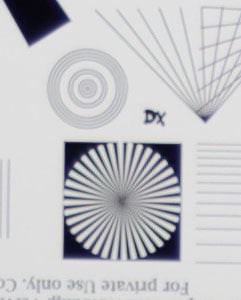 |  | n / a | ||
70mm, f2.8, 100 ISO | 70mm, f2.8, 100 ISO | |||
 |  | 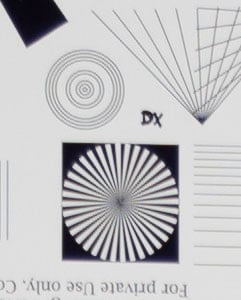 | ||
70mm, f4.0, 100 ISO | 70mm, f4.0, 100 ISO | 85mm, f4.5, 100 ISO | ||
 |  |  | ||
70mm, f5.6, 100 ISO | 70mm, f5.6, 100 ISO | 85mm, f5.6, 100 ISO | ||
 |  |  | ||
70mm, f8.0, 100 ISO | 70mm, f8.0, 100 ISO | 85mm, f8.0, 100 ISO |
At 70mm both 24-70mm zooms reverse roles: Now it’s the Nikon 24-70 that’s softer than the Tamron by about one stop. So for very good results in the DX-corner you need to stop the Nikon 24-70/2.8 down to f8 and the Tamron 24-70/2.8 down to f5.6. Had I shown the Nikon 24-85mm at 70mm here you’d have seen that it performs similar to its brother.
Summing up the results from the DX-corner: Both 24-70mm lenses profit from stopping down at the long end (70mm), the Tamron even at 50mm. And the Nikon 24-85mm holds up surprisingly well: at 70mm it needs some stopping down to achieve very good performance, but if you can zoom it in to 85mm its performance wide-open even bests both pro-zooms.
Well, onto the final challenge in this shootout: The FX-corner (and border) performance. Prepare for some nasty pictures as the 36MP D800-sensor extends its challenging pixel-pitch into the far corners of the image-circle. Never before have DSLR-lenses been subjected to such close scrutiny on a full-frame/FX body.
FX-corner performance at 24mm:
Nikon 24-70mm f/2.8G with Nikon D800 100% crop from FX-corner | Tamron 24-70mm f/2.8 VC with Nikon D800 100% crop from FX-corner | Nikon AF-S 24-85mm f/3.5-4.5G VR with Nikon D800 100% crop from FX-corner | ||
 |  |  | ||
24mm, f2.8, 100 ISO | 24mm, f2.8, 100 ISO | 24mm, f3.5, 100 ISO | ||
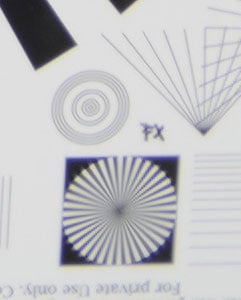 |  | 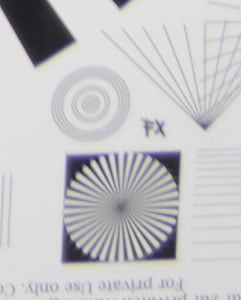 | ||
24mm, f4.0, 100 ISO | 24mm, f4.0, 100 ISO | 24mm, f4.0, 100 ISO | ||
 |  |  | ||
24mm, f5.6, 100 ISO | 24mm, f5.6, 100 ISO | 24mm, f5.6, 100 ISO | ||
 |  | |||
24mm, f8.0, 100 ISO | 24mm, f8.0, 100 ISO | 24mm, f8.0, 100 ISO |
At 24mm the FX-corner obviously challenges all three lenses: The images wide open are mushy although there is still some definition. But to get decent performance you need to stop down, e.g. to f5.6 where the Nikon 24-70 and the Tamron vie for first place: The Nikon has higher resolution in the sagittal orientation but the Tamron’s resolution is less prone to astigmatism and is more evenly distributed. And the Tamron has another advantage that shows clearly here: it shows the least distortions. So there’s a slight advantage for the Tamron which is followed by the Nikon 24-70 and the Nikon 24-85.
FX-corner performance at 35mm:
Nikon 24-70mm f/2.8G with Nikon D800 100% crop from FX-corner | Tamron 24-70mm f/2.8 VC with Nikon D800 100% crop from FX-corner | Nikon AF-S 24-85mm f/3.5-4.5G VR with Nikon D800 100% crop from FX-corner | ||
 |  | n / a | ||
35mm, f2.8, 100 ISO | 35mm, f2.8, 100 ISO | 35mm, f2.8, 100 ISO | ||
 |  |  | ||
35mm, f4.0, 100 ISO | 35mm, f4.0, 100 ISO | 35mm, f4.0, 100 ISO | ||
 | 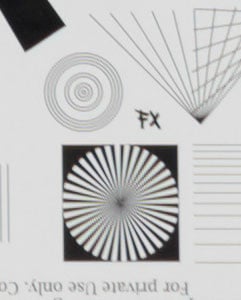 |  | ||
35mm, f5.6, 100 ISO | 35mm, f5.6, 100 ISO | 35mm, f5.6, 100 ISO | ||
 | 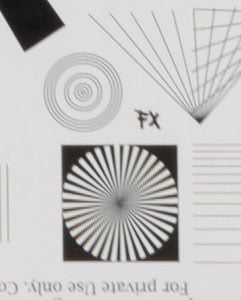 |  | ||
35mm, f8.0, 100 ISO | 35mm, f8.0, 100 ISO | 35mm, f8.0, 100 ISO |
35mm seems to be the most challenging focal length with regard to FX-corner performance. Results wide open look outright ugly and the interesting observation here is how fast each lens recovers when stopped down. Clearly the Tamron recovers fastest here, followed by the Nikon 24-85 and the Nikon 24-70.
FX-corner performance at 50mm:
Nikon 24-70mm f/2.8G with Nikon D800 100% crop from FX-corner | Tamron 24-70mm f/2.8 VC with Nikon D800 100% crop from FX-corner | Nikon AF-S 24-85mm f/3.5-4.5G VR with Nikon D800 100% crop from FX-corner | ||
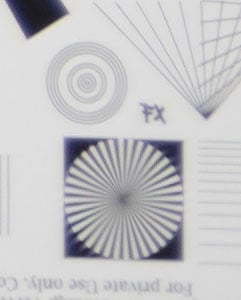 | 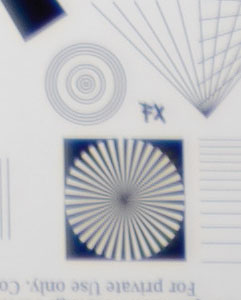 | n / a | ||
50mm, f2.8, 100 ISO | 50mm, f2.8, 100 ISO | |||
 |  |  | ||
50mm, f4.0, 100 ISO | 50mm, f4.0, 100 ISO | 50mm, f4.2, 100 ISO | ||
 |  |  | ||
50mm, f5.6, 100 ISO | 50mm, f5.6, 100 ISO | 50mm, f5.6, 100 ISO | ||
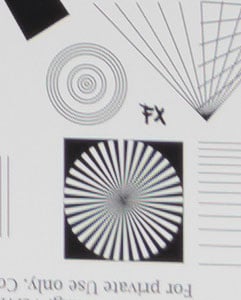 |  |  | ||
50mm, f8.0, 100 ISO | 50mm, f8.0, 100 ISO | 50mm, f8.0, 100 ISO |
At 50mm things look decidedly better even at f2.8. The Nikon 24-70 takes the lead here followed by the Tamron. The Nikon 24-85 brings up the rear at 50mm. It also shows the worst distortions.
FX-corner performance at 70mm (or at 85mm for the Nikon 24-85/3.5-4.5):
Nikon 24-70mm f/2.8G with Nikon D800 100% crop from center | Tamron 24-70mm f/2.8 VC with Nikon D800 100% crop from DX-corner | Nikon AF-S 24-85mm f/3.5-4.5G VR with Nikon D800 100% crop from FX-corner | ||
 | 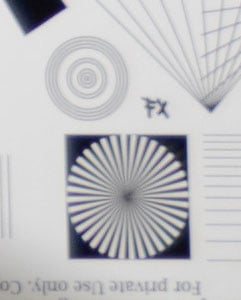 | n / a | ||
70mm, f2.8, 100 ISO | 70mm, f2.8, 100 ISO | |||
 |  | 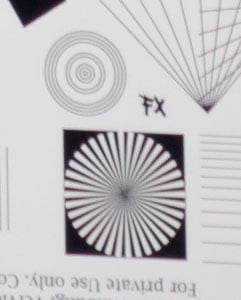 | ||
70mm, f4.0, 100 ISO | 70mm, f4.0, 100 ISO | 85mm, f4.5, 100 ISO | ||
 |  |  | ||
70mm, f5.6, 100 ISO | 70mm, f5.6, 100 ISO | 85mm, f5.6, 100 ISO | ||
 |  |  | ||
70mm, f8.0, 100 ISO | 70mm, f8.0, 100 ISO | 85mm, f8.0, 100 ISO |
At 70mm the Nikon 24-70 takes a clear lead and produces pretty impressive results even wide open. The Tamron has a hard time catching up. And the Nikon 24-85 performs somewhat in-between (same for 70mm). Btw.: don’t worry about the shadow in the lower left corner of the Tamron crop: it’s just that – a shadow on the test-target.
Summing up the results from the FX-corner: The Nikon 24-70 takes the lead at 50mm and 70mm, is on a par at 24mm but loses out at 35mm. The Tamron takes the lead at 35mm, is on a par at 24mm, keeps up at 50mm but loses out at 70mm. And the Nikon 24-85 again surprises by holding up pretty well compared to the pro-zooms.
Performance at larger distances
Test-targets shot at a distance of 40x focal length are one thing. But they are not always an indicator of performance for landscape shots. So let’s see how our three zooms perform at larger distances. When looking at the following images you have to keep in mind that they were taken at different days – although at a similar hour and position of the sun. So atmospheric conditions varied and so did contrast and colors. But in my experience from many shots those images can very well be used to compare the level of detail that the lenses produce.
I’ll only show crops from the FX border as the center-crops did not reveal many differences. You can click on each image to access the large original. Please respect our copyright and only use those images for personal use.
Performance at 24mm:
Nikon 24-70mm f/2.8G with Nikon D800 100% crop from FX-border | Tamron 24-70mm f/2.8 VC with Nikon D800 100% crop from FX-border | Nikon AF-S 24-85mm f/3.5-4.5G VR with Nikon D800 100% crop from FX-border | ||
 |  | n / a | ||
24mm, f2.8, 100 ISO, border | 24mm, f2.8, 100 ISO, border | |||
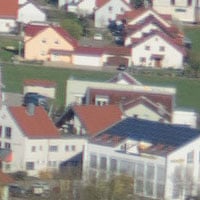 |  |  | ||
24mm, f4.0, 100 ISO, border | 24mm, f4.0, 100 ISO, border | 24mm, f3.5, 100 ISO, border | ||
 |  |  | ||
24mm, f8, 100 ISO, border | 24mm, f8, 100 ISO, border | 24mm, f8, 100 ISO, border |
The Nikon 24-70 has a lead here at all apertures. The Nikon 24-85 looks better than the Tamron at f4.0 which catches up at f8.
Performance at 35mm:
Huge advantage in performance for the Nikon 24-70. Second is the Nikon 24-85. And the Tamron is behind even at f8.0.
Performance at 50mm:
The Nikon 24-70 shows the best performance again at 50mm. With the Tamron and Nikon 24-85 practically tied for second place.
Performance at 70mm:
At 70mm the Nikon 24-70 is better than the Tamron only at f2.8 and f4.0. At f8.0 the Tamron takes the lead. Unfortunately the Nikon 24-85 did not catch the complete house at the right border, so I had to make do with a slightly different crop. But it looks like it’s somewhat between both 24-70mm zooms. Note I’ve not presented results at 85mm here as it’s obviously longer than the other two lenses on test.
Summing up the results from these shots show that the Nikon 24-70 takes a clear lead here. This seems surprising at first when compared to the results from the Siemens-stars. But there are two major factors at work that explain the different outcome:
First: With the Siemens-stars focus was optimized for each shot: center, DX-corner, FX-corner. This is done to prevent field-curvature of a lens to ruin the results just because the target is flat. In the shots of the ‘Unremarkables’ focus was optimized for the center target only and not changed for the border-crops. Thus any field-curvature the lens has does indeed influence the performance at the corners/borders.
Second: In the shots of the ‘Unremarkables’ the crops were not taken from the extreme FX-corner but from the FX-border. This is more likely to reflect real-world use of a lens.
Looking at other shots of both lenses show clearly that the Tamron’s performance deteriorates much earlier towards the outer area of the image circle than the performance of the Nikon 24-70. Compare the following two images at 100% original size: Frankfurter Roemer captured with the Tamron 24-70/2.8 at 38mm f5.6 versus the Altdorfer market-place captured with the Nikon 24-70/2.8 at 35mm f2.8. You can clearly see that the Nikon easily outperforms the Tamron in all but the last 2 millimeters of the FX corner although the Tamron was stopped down to f5.6!
Comparison of bokeh
The images for the 24-70/2.8 zooms were taken within only a few minutes time but the Nikon 24-85 was not available at the same time. So the bokeh test-shots are not directly comparable – but at least the set-up was. The crops in the first row were taken from similar places in the background of the shot, the second row from the foreground.
For background bokeh I’d rank the lenses as Nikon 24-70 1st, Tamron 2nd, and Nikon 24-85 3rd. The latter being crippled by only having a maximum aperture of f4.5 which naturally is a disadvantage of 4/3 of a stop against both f2.8 lenses. Interestingly the order reverses when judging foreground bokeh. In this case the Nikon 24-85 produces the bokeh with the least outlining, the Tamron comes in 2nd and the Nikon 24-70 is 3rd place. But under normal shooting conditions background rendering is more important than foreground bokeh. So the Nikon 24-70 has a slight advantage here.
If you’d like to check out more images to compare these three lenses have a look at my high resolution Nikon 24-70mm f2.8 sample images, Tamron 24-70mm f2.8 sample images, or Nikon 24-85mm sample images.
Other comparisons: Flare/ghosting, longitudinal CAs, auto-focus, build quality, image stabilization
Shooting normal or wide-angle lenses always runs the risk of catching a strong light-source like the sun shining directly into the lens. Of the three lenses the Tamron was the one which showed flare/ghosting more often than the other two, but mostly on the shorter focal lengths.
Regarding longitudinal CAs (loCA) that produce magenta colorations of subjects in front of the plane of focus and green colorations for subjects behind that plane: The Nikon 24-70 was the only lens that produced any loCAs in my tests. But even then those were still not too obvious in real-life shots.
AF on all three lenses was very reliable with the Nikon 24-70 showing the least variation. The fastest AF-operation was from the Nikon 24-70, followed by the Tamron. The Nikon 24-85 was clearly the slowest – although if you compared it with the same focus-throw (infinity to 0.85m) is was not too far behind. But it has some slack/play between the focus ring and the focus-action which makes accurate manual focus wide open at the long end a hassle.
Regarding the build quality the lenses rank as their prices suggest: The Nikon 24-85 feeling like a better kit-lens, the Tamron giving the impression of a clearly upmarket construction, and the Nikon 24-70 marking the professional level: rugged and sturdy with smoothly running focus and zoom-rings. And this sturdiness already proved its worth when the lens slipped from my shoulder (with a D800 attached) and hit the ground from a height of 3 feet: Apart from a broken mount on the lens-shade there was not a scratch on the Nikon 24-70, it worked as smooth as before, and I tested the optical performance and found the centering of the lens to be unscathed.
When comparing image stabilization between the Tamron 24-70 and the Nikon 24-85 I found out that both are pretty effective giving you more than two stops effect of stabilization. But Tamron’s VC seems to need a little time to be fully effective. So the Nikon 24-85 has the lead here. And remember: The Nikon 24-70 has no image stabilization at all.





